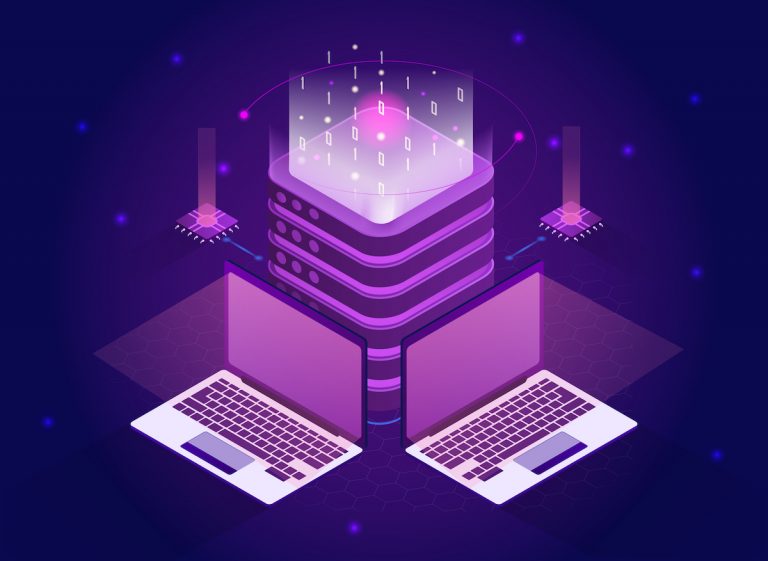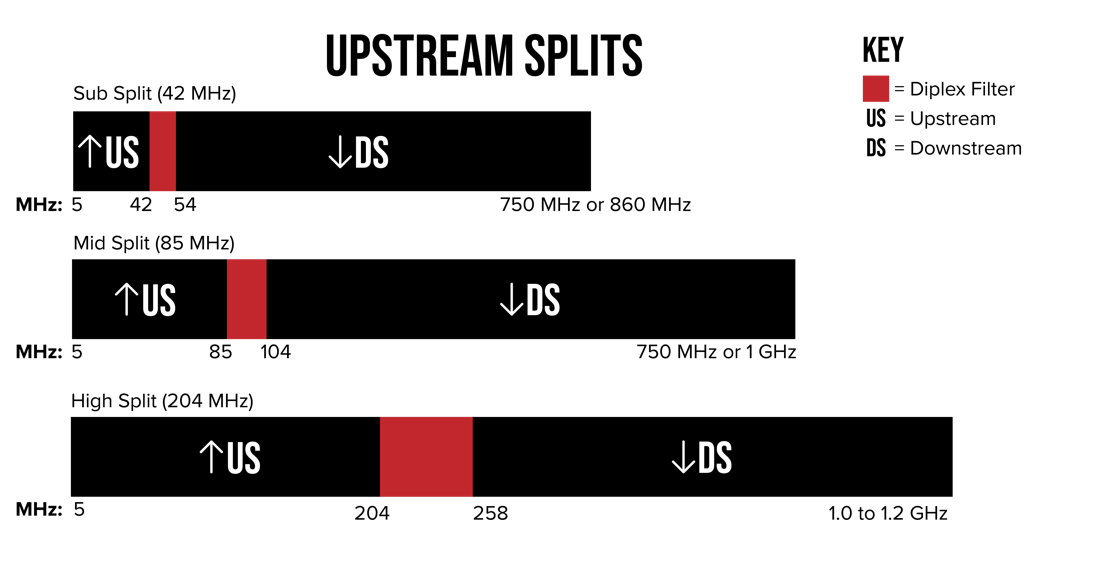HFC Network
Band Splits 101: Splitting Our Way to 10G

As consumers’ bandwidth needs continue to grow, cable operators are always thinking of ways to expand their network capacity to accommodate future increases in data traffic—especially upstream traffic. Band splits play an important role in that effort, taking advantage of the incredible resiliency of cable’s hybrid fiber-coaxial (HFC) network.
What Is a Band Split and How Does It Work?
To describe what band splits are, we need to first define bandwidth. The best way to think of bandwidth is as a stretchable pipe that allows radio frequency (RF) signals carrying data to travel through it. So, when we talk about expanding the bandwidth of a network, we’re looking for ways to stretch that pipe to higher frequencies to accommodate more data traffic. The term “bandwidth” is somewhat synonymous with “capacity,” and on cable networks bandwidth is measured in megahertz (MHz) and gigahertz (GHz)—1 GHz is 1,000 times greater than 1 MHz.
The following figure shows several options available for band splits on the cable broadband network, allowing various mixes of upstream and downstream bandwidth depending on the needs of consumers. Frequency Division Duplex (FDD) designates separate bands for upstream and downstream traffic.

The bandwidth “pipe” (split into two parts) has data traffic traveling in opposite directions: downstream from your provider’s hub to your modem and upstream from your modem back to the hub. This back-and-forth flow allows you to use interactive services like video chat, teleconferencing, telehealth and more.
Band splits determine how much bandwidth is dedicated to downstream and upstream channels. Downstream traffic is usually transmitted on a high-band frequency range, whereas the lower band is dedicated to upstream traffic. Two-way amplifiers are used to amplify signals in both directions. These amplifiers have something called diplex filters to separate downstream and upstream frequencies to prevent interference.
Usually, consumers use a much larger chunk of the bandwidth pipe for downstream traffic, but that’s starting to change. As people switch to working and studying from home, they’re using more interactive services like video chats, which require more upstream data. To accommodate this trend and future demand, network operators need to consider when to add more upstream bandwidth. For this reason, they may need to rethink the way their networks are split.
What Kind of Band Splits Are There?
Not all band splits are created equal: In North America, there are sub-splits, mid-splits and high-splits, and Europe has its own band split. This situation has to do with how the operator divides the available bandwidth pipe between downstream and upstream traffic.
Although sub-splits are still prevalent in North America today, mid-split and high-split bands require an upgrade. In a sub-split, a spectrum range of 5 MHz to 42 MHz is used for upstream traffic and 54 MHz to 1.2 GHz or 1.8 GHz is for downstream traffic. In a mid-split scenario, 5 MHz to 85 MHz is dedicated for upstream and above 108 MHz for downstream. And high-split extends the upstream range to 204 MHz while reserving 258 MHz and higher frequencies for downstream.
The European split uses an upstream spectrum range of 5 MHz to 65 MHz, and the downstream spectrum range is above 88 MHz. There’s also an ultra-high-split where the upstream goes to a 684 MHz upper-frequency limit that includes even more choices of band-splits, which some operators may consider in the future. However, for most networks in North America, Europe and Latin America, future bandwidth allocations will consist of mid-split and high-split bands, and even some ultra-high-splits.
How Has This Technology Evolved?
If we go back to the early pre-internet days, information on cable networks traveled one way, delivering analog TV signals to millions of homes over coaxial cable, with no data traveling back from the consumer to the hub. Eventually, as consumer needs evolved, so did the industry, and networks began to send signals both ways, to and from the consumer, opening doors to cable broadband Internet, video chatting and much, much more.
As we move toward the next phase of HFC evolution, we must remember that building the super-fast and reliable networks we have today required a lot of collaboration and about $290 billion dollars in infrastructure and network investments over the past 20 years. And that’s just in the United States! For most cable operators, a re-allocation to mid-split, high-split or a mix of the two will require switching out signal amplifiers and other legacy equipment—an investment that many are already making. Although there’s no one-size-fits-all approach, the consensus is to move to at least the mid-split in the near future, further expanding the incredible capacity of the HFC network.
How Will Higher Band Splits Affect You and Your Future?
Although as a consumer you’ll never have to worry about how your cable company’s bandwidth is split between downstream and upstream, we know you pay attention to network speed. The journey from today’s 1G to tomorrow’s 10G offerings will involve expanding the bandwidth pipe to allow for more capacity. More bandwidth will give us more flexibility to accommodate near-future technologies, including bandwidth-hungry virtual reality (VR) applications and more.
That’s where band splitting really makes a difference. Dedicating higher band splits to upstream traffic will future-proof our networks for years to come, allowing us to reach our goals and build the next-generation of technologies to help us live, work, learn and play in the coming decades.




